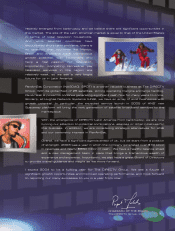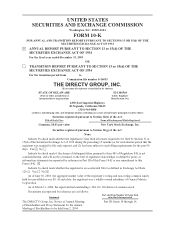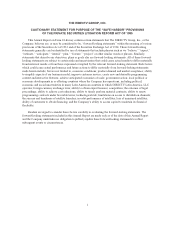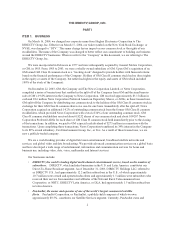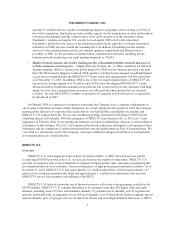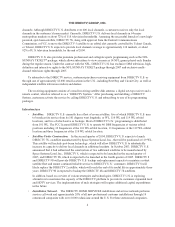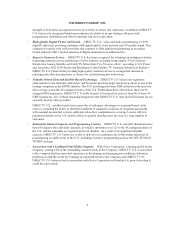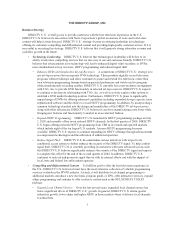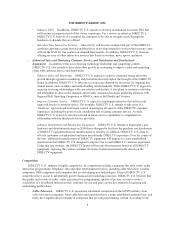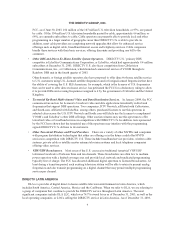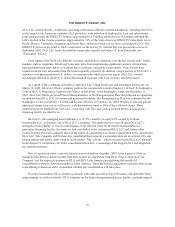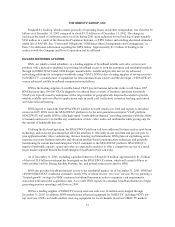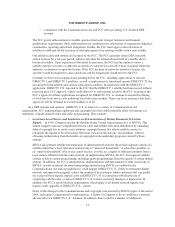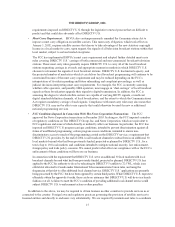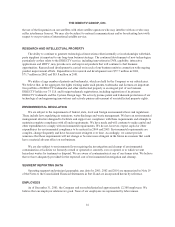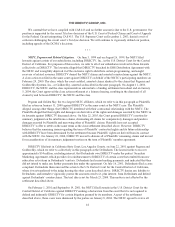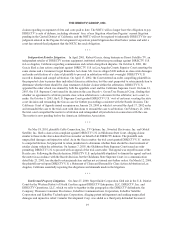DIRECTV 2003 Annual Report Download - page 16
Download and view the complete annual report
Please find page 16 of the 2003 DIRECTV annual report below. You can navigate through the pages in the report by either clicking on the pages listed below, or by using the keyword search tool below to find specific information within the annual report.THE DIRECTV GROUP, INC.
FCC, as of June 30, 2003, 104 million of the 107 million U.S. television households, or 97%, are passed
by cable. Of the 104 million U.S. television households passed by cable, approximately 66 million, or
64%, are currently subscribers to cable. Cable operators are presently able to provide local and other
programming in a larger number of geographic areas than DIRECTV U.S. is able to provide. In
addition, most cable providers are completing network upgrades that allow for enhanced service
offerings such as digital cable, broadband Internet access and telephony services. Cable companies
bundle these services with their basic services, offering discounts and providing one bill to the
consumer.
•Other DBS and Direct-To-Home Satellite System Operators. DIRECTV U.S.’ primary DBS
competitor is EchoStar Communications Corporation, or EchoStar, which had approximately 9.4 million
subscribers at December 31, 2003. DIRECTV U.S. also faces competition from Cablevision
Communications, Inc., or Cablevision, which launched commercial service of VOOM through its
Rainbow DBS unit in the fourth quarter of 2003.
Other domestic or foreign satellite operators also have proposed to offer direct-to-home satellite service
to U.S. customers using U.S.-licensed satellite frequencies and/or foreign-licensed frequencies that have
the ability of covering the U.S. SES Americom, for example, which is the licensee of U.S. frequencies
that can be used to offer direct-to-home service, has petitioned the FCC for a declaratory ruling to allow
it to provide DBS service using frequencies assigned to it by the government of Gibraltar and the United
Kingdom.
•Terrestrial Ku-Band Multi-channel Video and Data Distribution Services. In January 2004, the FCC
commenced an auction for licenses to broadcast video and data applications terrestrially in Ku-band
frequencies that support DBS operations. Two companies, DTV Norwich, affiliated with Cablevision,
and South.com, affiliated with EchoStar, among others, purchased licenses to use this spectrum in
selected cities across the U.S. DTV Norwich and South.com will likely use the licenses to complement
VOOM’s and EchoStar’s other DBS offerings. Other auction winners may use this spectrum to offer
terrestrial video or broadband services in competition with DIRECTV U.S. In addition, tests sponsored
by the FCC have shown that the terrestrial use of this spectrum may interfere with the programming
signals DIRECTV U.S. delivers to its customers.
•Other Terrestrial Wireless and Wired Providers. There are a variety of other MVPDs and companies
with program distribution technologies that either are offering or in the future could offer MVPD
services in competition with DIRECTV U.S. These include broadband service providers, wireless cable
systems, private cable or satellite master antenna television systems and local telephone companies
offering video services.
•VHF/UHF Broadcasters. Most areas of the U.S. can receive traditional terrestrial VHF/UHF
television broadcasts of between three and ten channels. These broadcasters are often low to medium
power operators with a limited coverage area and provide local, network and syndicated programming
typically free of charge. The FCC has allocated additional digital spectrum to licensed broadcasters. At
least during a transition period, each existing television station will be able to retain its present analog
frequencies and also transmit programming on a digital channel that may permit multiple programming
services per channel.
DIRECTV LATIN AMERICA
DLA is a provider of digital direct-to-home satellite television entertainment in Latin America, which
includes South America, Central America, Mexico and the Caribbean. When we refer to DLA, we are referring to
a group of companies that combine to provide the DIRECTV service throughout Latin America. The most
significant companies include DLA LLC, which was 74.7% owned by us as of December 31, 2003, as well as the
local operating companies, or LOCs, selling the DIRECTV service in Latin America. As of December 31, 2003,
9


